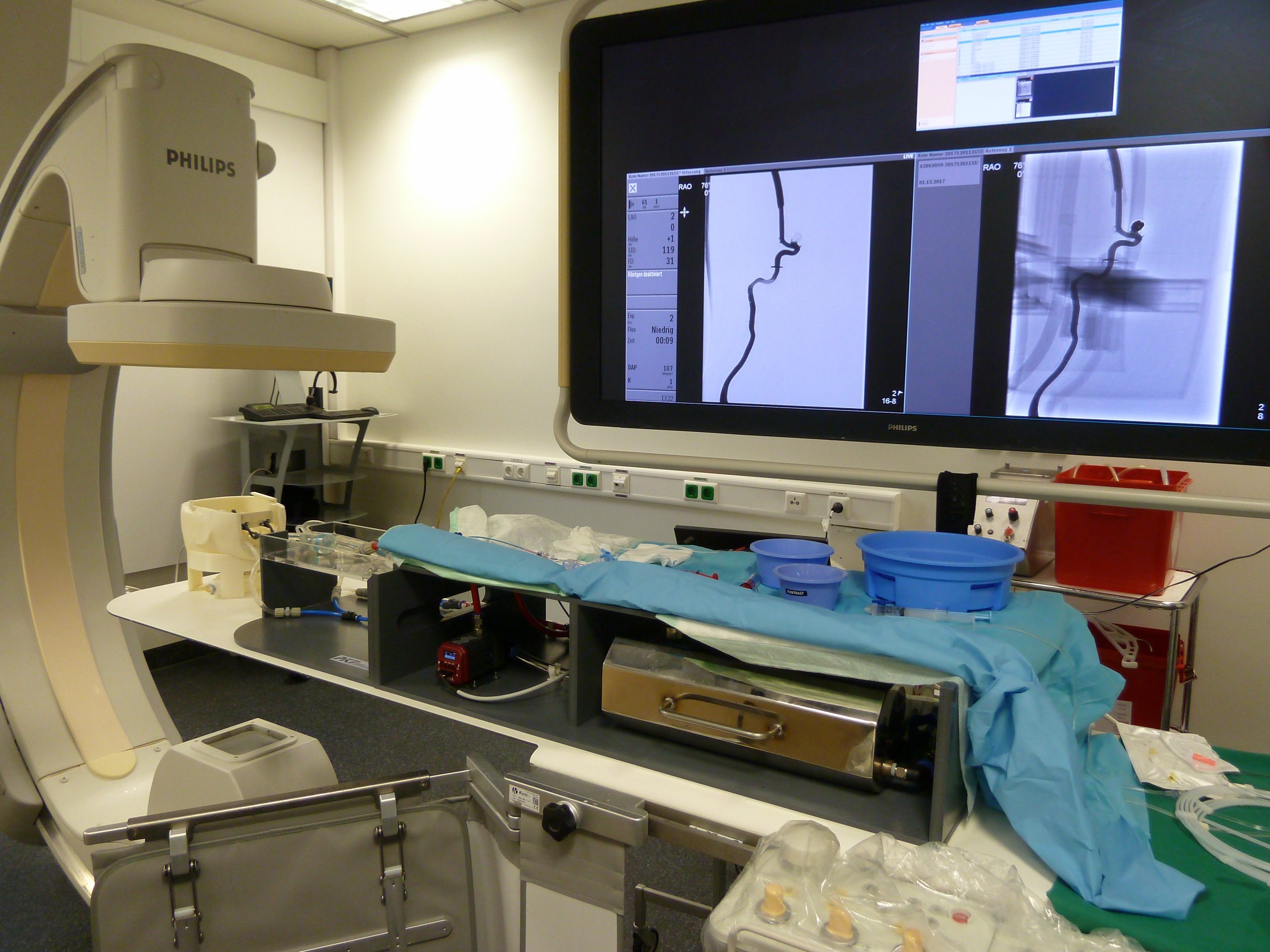
Worldwide, millions of mice, rabbits, rats, dogs, monkeys and pigs are still being used in medical research. They are used to study diseases such as cancer, dementia, diabetes and heart disease. But scientists don’t just use animals as test objects in fundamental research. Animals are still laid out on the operating table to train doctors. Especially surgeons.
Neurosurgeons in particular often practice on animals such as rabbits and pigs before they are allowed to operate on humans. For example, following a ruptured aneurysm. Cerebrovascular aneurysms are arterial dilatations that can burst inside arteries because of constant high blood pressure. This results in a life-threatening brain haemorrhage.
In order to be able to practice surgery for cerebrovascular aneurysms without animal experiments, a research team from the Institute for Product Development and Mechanical Engineering Design (PKT) and the Institute of Microsystems Technology at the Hamburg University of Technology (TUHH) have developed a new method in cooperation with neuroradiologists from the University Medical Center Eppendorf (UKE). Within three years the ELBE-NTM team developed a new animal-free method. This is based on the “Hamburg ANnatomical NEurointerventional Simulator” (HANNES). Using this model, patient-based aneurysms can be accurately simulated with a 3D printer.

The last animal experiment was two years ago
Not only does this have the advantage that no more animals need to suffer. Surgeons are also able to carry out far more simulations than was previously the case. Furthermore, this simulation model also enables doctors to exchange individual vascular segments during training. Aneurysms across a range of patient-specific anatomies can now be treated.
“The advantage of this is that doctors can train any number of actual cases as often as they like on the basis of this model. All this in the interests of animal welfare,” says Professor Dieter Krause. He’s head of the Institute for Product Development and Design Technology at the TUHH. Since the introduction of the HANNES model two years ago, no animals have been used at the UKE for training interventions in neurovascular aneurysm.
The “ELBE-NTM – Development and Evaluation of a Patient-Based Neurointerventional Training Model” project is funded by the German Federal Ministry of Education and Research. That to the tune of almost one million euros as part of the “Alternative methods to animal experiments” funding initiative. Which was set up as a follow-up project to the ALSTER-3D project. This in turn was funded by the Forschungszentrum Medizintechnik Hamburg. Two further research projects on endovascular blood vessel simulation are also currently underway in a joint venture between UKE and PKT.
You can find more articles about animal testing here.

